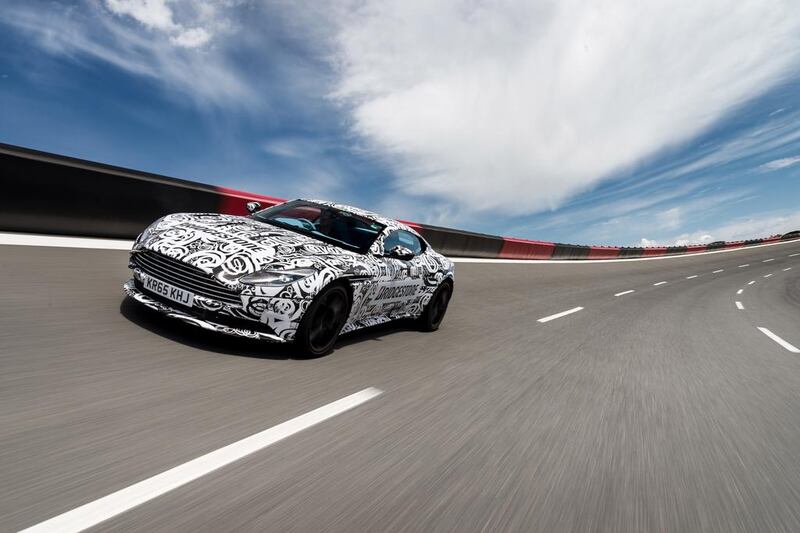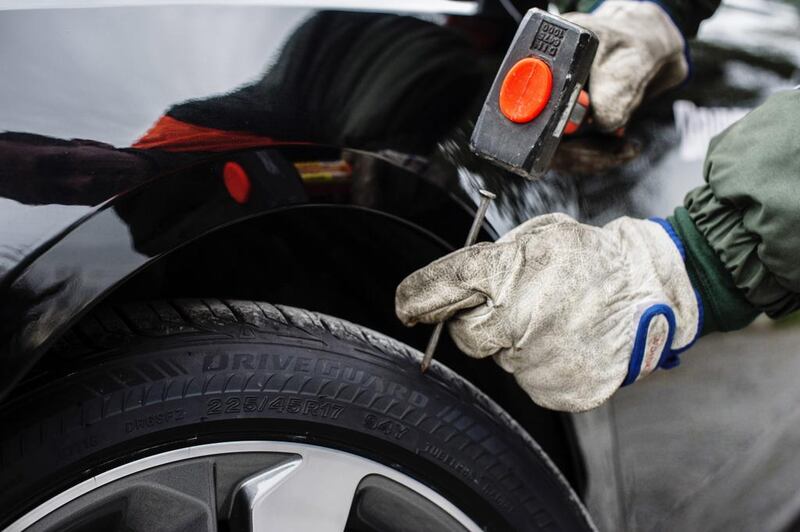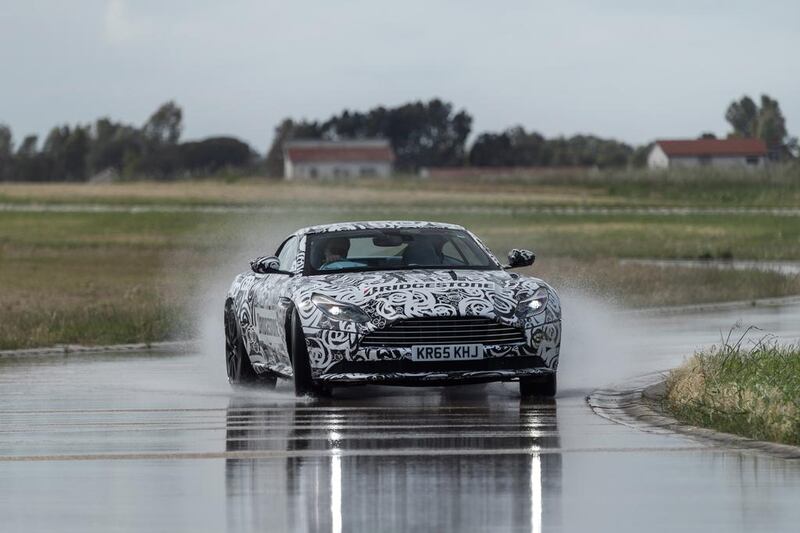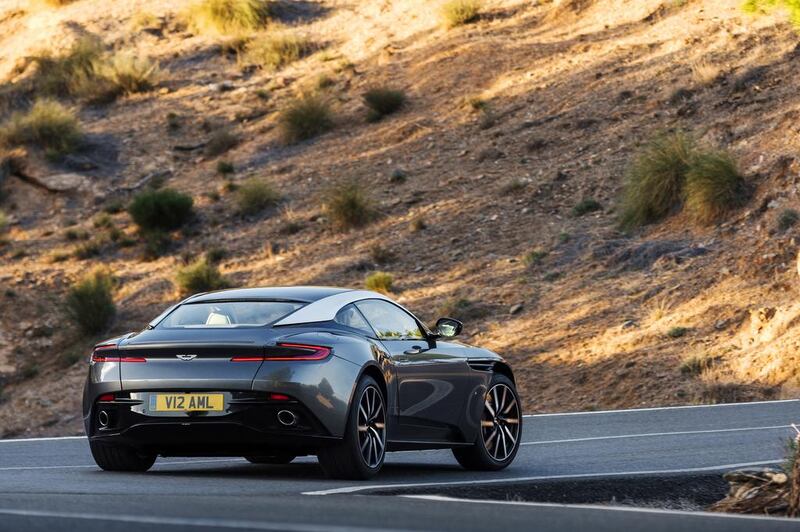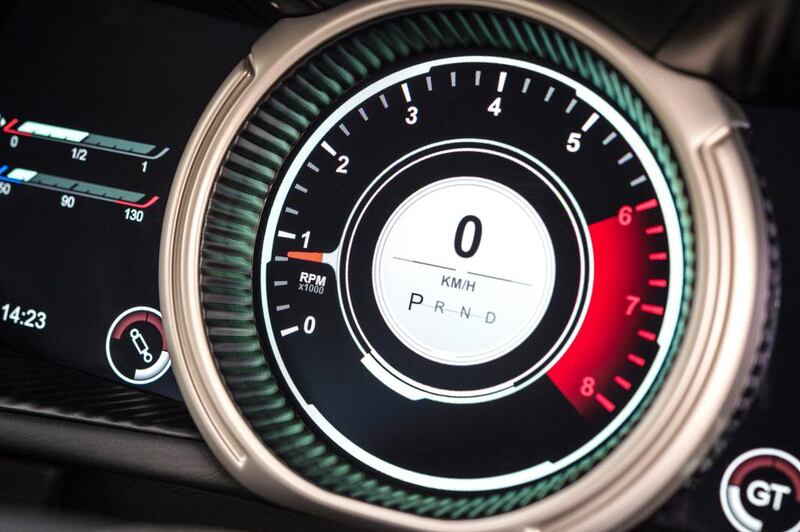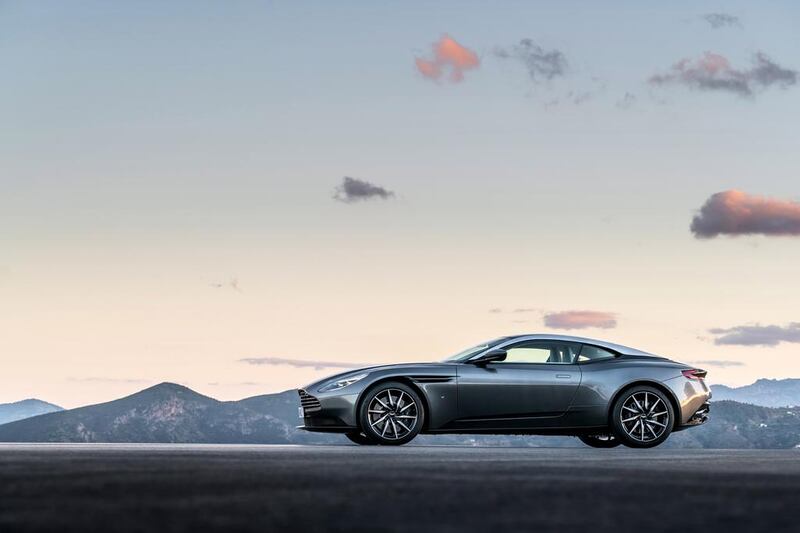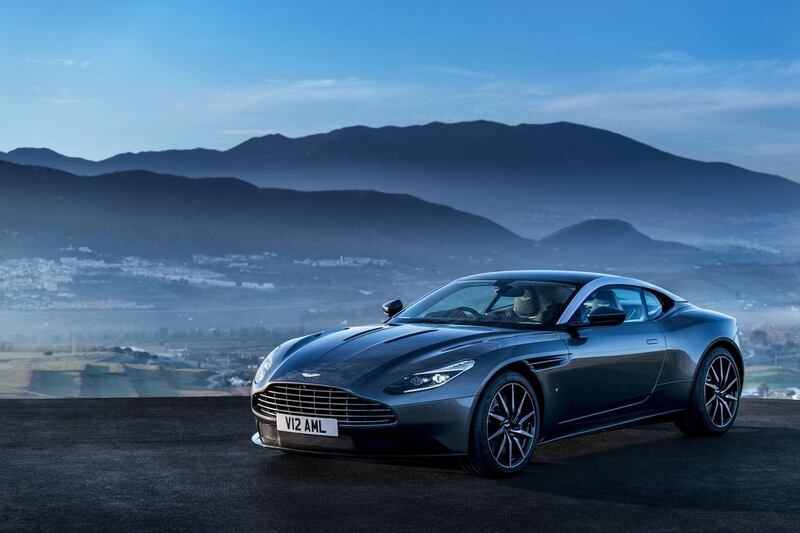The first media drives of the new Aston Martin DB11 are still three months away, but I can tell you with certainty – because I have just driven a pre-production model – that it's a blindingly brilliant machine that bodes well for the future of this storied brand.
The car in question is a development mule, still liberally covered by camouflage with Bridgestone branding all over it. Even up close, it’s difficult to get an accurate impression of the beauty that lies beneath, but having seen a “proper” one at the regional unveiling a few weeks ago, I know exactly what it looks like – and it’s a showstopper par excellence.
It’s immediately obvious who makes it, thanks to certain design cues, but it’s much more visually aggressive than the now-dead DB9. It manages to be more masculine yet entirely beautiful, testament to the sterling efforts of a company fully in tune with its heritage, while moving towards an altogether more profitable future.
There’s a reason for that Bridgestone wrap: I’m at the tyre manufacturer’s proving ground a short drive from Rome, where tortuous tracks and special surface facilities are being used to carry out final tweaks before the chassis is signed off for production. The data being gathered here and sent back to Aston Martin’s development and engineering teams at the Gaydon headquarters will be pivotal in making the DB11 the best it can possibly be. Unusually, the company has decided to let some global media play a part in that by allowing them to drive it – hard – and provide some important feedback.
Bridgestone has been the chosen tyre supplier for Aston Martin since the DB7 was developed in the early 1990s, and each new model since then has had its own tyres specifically developed to bring the cars’ best attributes to the fore. This is something that has become more crucial as production cars have been getting ever more powerful and faster, placing previously unheard of demands on the black rubber bands that are fitted to those huge alloy wheels.
For a luxury GT car such as the DB11, the tyres need to be able to cope with enormous physical pressures because of the car’s weight, girth, torque and pace, while offering maximum fuel efficiency, comfort and rigidity – a tall order, perhaps, but one that’s unavoidable as part of any new model’s development process.
Here, at the Bridgestone facility, the DB11 has been pounding tight circuits, oval banking, wet-handling areas and mock-ups of country roads, where its levels of grip, pliancy and refinement are under the microscope. At this stage in the pre-manufacture ramp-up, the pressure is on to achieve the perfect set-up for the car to go into series production a few weeks from now.
Inside, cables poke out of panels and enter data recorders. It’s rough around the edges, a million miles away from what a customer will experience from the real deal inside a showroom. But everything works, and having recently spent plenty of seat time in one of the last DB9s, it’s safe to say there’s more room in the DB11. Displays and controls that came in for criticism for being “past it” have given way to fully electronic information systems developed and supplied by Aston’s new technical partner, Daimler.
The silly key fob that was laughably known as the Emotion Control Unit (topped with crystal glass, it cost thousands of dirhams to replace if you lost or damaged it) has been junked in favour of a circular start button in the centre of the dashboard, and the architecture throughout the cabin has been thoroughly overhauled. Even in this development car, you can’t escape the impression that the DB11 will offer occupants previously unseen levels of sophistication and luxury, while keeping true to its sporting credentials.
Key to the development of this car has been the appointment of Matt Becker, who’s my guide and co-driver as I head onto the tarmac. Becker spent more than two decades at Lotus, where he was in charge of new model development, and despite being hamstrung by Lotus’s pitifully small budgets, he managed to make that company’s models the envy of the world when it comes to handling prowess. For him to be the man in charge of getting the balance between genuine sportiness and continent-touring refinement right is a brilliant development, and he’s extremely enthusiastic about being able to have such influence on the upcoming individual models.
He says that each will have distinct characteristics, and is clear about the DB11’s positioning. “It’s a GT car – it isn’t meant to be a supercar,” he says. “But the aim here was to make a substantially large car feel like it’s much smaller on the road. It shouldn’t feel cumbersome or intimidating, rather it should shrink around its driver and offer the agility of a sports car when required, while still offering the comfort of a long distance tourer.”
He says that the car I’m driving is yet to reach the ideal compromise between those two opposing attributes. There’s work still to be done on the torque-vectoring system, which varies the amount of twist sent to either rear wheel, and the brakes aren’t quite there yet, either. But I’m told I can drive it as fast as I’m comfortable with, so long as I “don’t bend it”. No pressure, then.
The DB11’s platform is entirely new, as is its V12 engine, which for the first time in any production Aston Martin is turbocharged. It’s smaller than the DB9’s, losing nearly a litre of capacity, but it certainly hasn’t lost any of its voice. On the contrary, as I pile on the speed and increase my levels of confidence, it’s the one thing that reminds me of previous models. The rest is an entirely new experience: the differences between the way this car goes and handles compared to anything before it are like night and day. Becker has done well – this car feels entirely nimble, easily disguising its bulk and weight.
Much of this is to do with those Bridgestone tyres, which provide the final link to the road surfaces driven on. Whether on dry tarmac or sodden, on twisting track or straight line, high-speed areas, they provide boundless grip and adjustability, giving reassuring tenacity and feedback on treacherously wet sections.
The real litmus test will be in the complete, final production version, in real-world conditions, on public roads. But on the basis of this experience, my mind is made up: the DB11 could not be a better car for its maker. The hype, for once, is justified.
motoring@thenational.ae
Follow us @LifeNationalUAE
Follow us on Facebook for discussions, entertainment, reviews, wellness and news.
